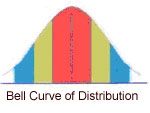School and Learning
©Arlene R. Taylor PhD
I encourage people to learn all they can about brain function and to apply the knowledge they gain to their own lives on a daily basis. Because it is often easier to start from something than from nothing, I have prepared these practical application summaries related to traditional school subjects and learning.
My goal is to stimulate thinking and observation, trigger increased awareness at an individual level, jumpstart applications for every day living, and provide options for behaviors. Although I have relied heavily on brain function research, a plethora of studies, and discussions with brain researchers and other experts, the summaries represent my own brain’s opinion.
 Remember that conclusions from research studies are presented in the form of generalizations that apply to nearly 70% of the population (first standard deviation on either side of the mean). There are always exceptions based on individuality. No two brains are ever identical in structure, function, or perception, not even those of identical twins. If some of your personal characteristics or typical behaviors don’t match a specific generalization, it doesn’t invalidate the research findings. It does exemplify individual uniqueness.
Remember that conclusions from research studies are presented in the form of generalizations that apply to nearly 70% of the population (first standard deviation on either side of the mean). There are always exceptions based on individuality. No two brains are ever identical in structure, function, or perception, not even those of identical twins. If some of your personal characteristics or typical behaviors don’t match a specific generalization, it doesn’t invalidate the research findings. It does exemplify individual uniqueness.
A plethora of models have shown up on the scene in an attempt to positively impact whole brain learning. Some models address learner responses (e.g., McCarthy 4-MAT 1990, Meyers-Briggs 1995); others deal more with how learning is processed (e.g., Gregorc/Butler 1979, Ned Herrmann 1988). While models can offer useful frameworks, the most important thing to remember is simply to provide as many different learning opportunities for the student as possible and consistently offer choices.
Refer to Articles on this website for examples of selected models.

